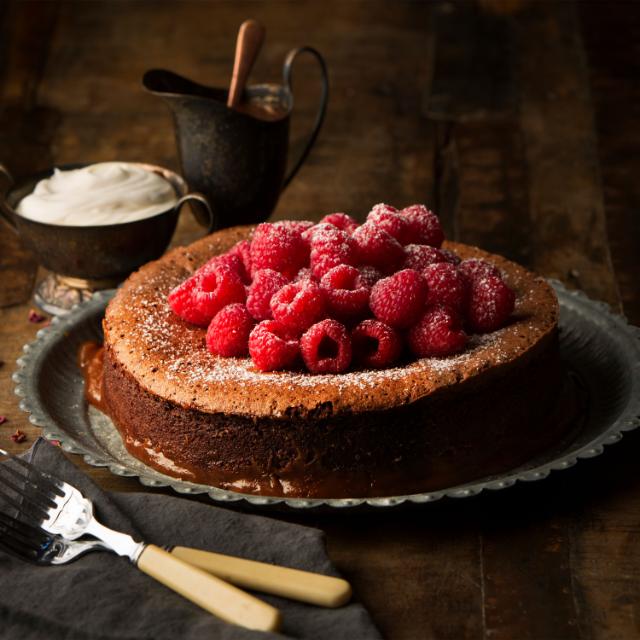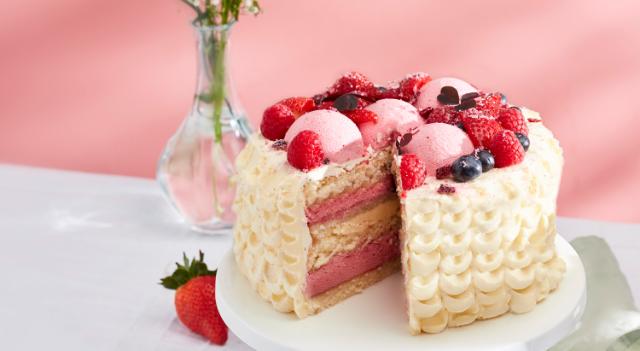
Tips and ideas
It is easy and fun to make your own Jams, Jellies and Marmalades. The sugar enhances the flavour of the fruit you are using and ensures a longer shelf-life for your masterpiece.
How to make jams and jellies and marmalades
1. The Traditional Method When making jam by the traditional method the process is divided into two stages:
First stage - Prep cooking
In this stage the fruit is prep-cooked by simmering, usually with a small amount of water, until soft. As well as tenderising the fruit this releases the pectin, evaporates moisture and thus reduces bulk. Once sugar is added the fruit will not continue to soften.
Second Stage - Adding the sugar
In this second stage, sugar is added and the mixture is boiled to jelling or setting point. The sugar is warmed first to speed the process. Draw the pan off the heat and add warmed sugar and the lemon juice (if it's being used to provide the correct proportion of acid) to the mixture. Stir until dissolved. Return the pan to the heat and boil rapidly, stirring constantly, until setting point is reached. Skim off any scum that rises to the surface with a ladle. Too much boiling causes syrupy, sticky, hard jam, too little and the jam will not set correctly.
2. The Sure-Set Method
Sure-Set provides a quick, easy, trouble-free method. It is best to use 1kg of fruit to 1kg of Sure-Set.
First Stage - Pre-cooking
Some fresh fruits need to be pre-cooked by simmering gently in a small quantity of water to soften skins and cook the fruit. Most frozen fruits will not need pre-cooking.
It is important that you do not allow the fruit to cook too rapidly as it may evaporate too much of the moisture. The simplest method of checking this is to weigh the pan and the fruit before you start cooking. After the first stage of cooking is completed, re-weigh the pan and its contents. The two weights should be the same. If necessary add a little water to bring it up to the same weight. If the weight is greater, then further boiling is needed to drive off excess moisture. As with the traditional method, too much moisture results in a poor set.
Second Stage - Adding Sure-Set
Add Sure-Set to the mixture, stirring until dissolved. Still stirring, bring to the boil-this is when the mixture begins to bubble vigorously. Keep stirring continuously. Boil for exactly four minutes for jams and marmalades and one minute for jelly. At the end of the specified vigorous boiling time the jam will have reached setting point. During boiling skim off any scum that rises to the surface with a ladle.
Jams, Jellies and Marmalades
All jams, jellies, and marmalades consist of fruit boiled with sugar to jelling or setting points. Fruit naturally contains a number of elements that contribute to the flavour, setting and keeping qualities of the finished product.
Yeasts are naturally present in fruit and can cause a preserve to grow a mould, or to ferment, or become 'fizzy'. However, yeasts cannot live in a preserve that contains 60% or more sugar. For that reason sugar is generally calculated to form 60% by weight of the preserve.
Acids - fruits high in acids make the best preserves; too little and the preserve may crystallise. A recipe using fruit which is naturally low in acid will often contain added lemon or another acid fruit juice, or suggest that it is best made using Siúcra and McKinney's Sure-Set Jam Sugar.
Pectin is a natural setting agent found in varying amounts in all fruits. A recipe using fruits low in pectins often contains additional pectin-rich fruits or juices, or many suggest it is best made with Siúcra and McKinney's Sure-Set Jam Sugar.
Sugar is an essential ingredient and is used both to sweeten and to preserve jams, jellies and marmalades. Whatever kind of sugar you use, the keeping qualities will be the same. Siúcra Granulated Sugar is widely used and suitable for many recipes. Siúcra and McKinney's Sure-Set Jam Sugar is specially formulated for the making of preserves. Every single crystal is coated with a finely balanced mixture of apple pectin and fruit acid, making it a good choice, particularly for fruits that have not enough natural pectin or acid.
Pectin and Acid Levels of Fruit
High: Cooking Apples and Crab Apples, Gooseberries, Damsons, Red and Blackcurrants, Orange and Lemons, and some varieties of Plum.
Medium: Raspberries, Loganberries, Apricots, Greengages.
Low: Cherries, most varieties of Strawberry, Blackberries, Elderberries, Mulberries, Pears, Melon, and Vegetable Marrow.
Potting and Covering for Jams and Jellies
Most jams and jellies are poured immediately into the jam jars. However, before putting whole-fruit jam (like strawberry or cherry) and marmalades, allow to cool for 15 minutes when using traditional methods and 3-5 minutes when using Sure-Set. Then stir gently to distribute the fruit or peel evenly to stop it rising to the top of the jar.
Always fill the jars right to the top. Clean away any drips on the outside of the jar. Place a waxed-paper disc on top at once to prevent any mould spores from the atmosphere getting into the jar. The disc must be placed so that it lies flat, wax side facing the jam (it is the slightly smoother side of the disc).
Lightly dampen the cellophane cover and stretch it tight. Do this either while the jam is still very hot or allow it to become absolutely cold. Covering jam when it is warm creates conditions that encourage the growth of mould. Place a rubber band around the neck of the jar to hold cover in place and gently pull the cover so that there are no wrinkles. When it is dry it should be taut.
Airtight covers prevent shrinkage in storage. Finally, label with the type of preserve and the date on which it was made.

Setting Point for Jams and Jellies
There are various traditional methods of testing to see if the mixture has jelled and reached 'setting point'. While testing, either lower the heat or draw the pan off the heat to prevent over-boiling.
Temperature test: A sugar thermometer will tell you when the mixture reaches 105°C / 221°F. Before use, the thermometer should be kept beside the cooker in a bowl of very hot water. Care should be taken not to rest the bulb on the bottom of the pan when testing.
Sheet test: Stir mixture with a flat wooden spatula then lift the spatula out of the jam. If the correct temperature has been reached the mixture will fall from the spatula in a characteristic 'sheet' of drips.
Saucer test: Using a wooden spoon, put a little jam on a cold saucer and allow to cool, then push across the top of the jam with your finger, if the surface wrinkles the mixture is ready.
Storage and Keeping Times for Jams and Jellies
Choosing a suitable place to store your preserves is important if the jam is to keep well and in good condition. Store in a cool, dry place for up to one year. Preserves stored in conditions that are too cold, such as in a refrigerator, will tend to crystallise.
Preserves stored in conditions that are too warm may crystallise, shrink, and grow mould.
Freezer jams are uncooked and may be kept frozen for up to six months. Once they have been de-frosted, they should be stored in the refrigerator, where they will keep for three days.
Can you freeze homemade jam recipes and if so, for how long?
Jam has a long shelf life because of the high sugar content in it. However it can be frozen for up to three months. When freezing jam ensure it is in a sterilised plastic container with a tight fitting lid. It is not recommended to freeze it in a glass jar as could crack and break in the freezer.
Sure-Set Jam Sugar
Siucra and McKinney's Sure-Set Jam Sugar is ideal because:
● A shorter boiling time is required, giving a fresher, stronger fruit flavour and a more natural colour.
● Jams and marmalades only need four minutes vigorous boiling time if you use Sure-Set. One minute of vigorous boiling is sufficient for jelly.
● Less destruction of valuable nutrients like Vitamin C.
Do you have any questions about our products and services?

Time for citrus
Is there anything better than to start the morning with homemade marmalade on your toast. Let the season's citrus fruits inspire you.

Perfect Pancakes
Inspired by the Japanese breakfast staple, Puffed Pancakes with Strawberries, Cinnamon Syrup and Lemon Cream, served warm and straight from the pan are sure to be a winner with all the family.

Baking with oranges and lemons
Orange and lemon flavours make a great choice for baking. Refreshing and sour, citrus fruit goes well with other flavours such as chocolate and caramel. Let our delicious recipes inspire you.

Delicious chocolate
Mmm! What could be better than a rich, sumptuous chocolate cake to lift the spirits – either as an indulgent treat or to round off a meal.

The Labelling Machine
Create simple, pretty labels and table placement cards in a variety of patterns and colours.
